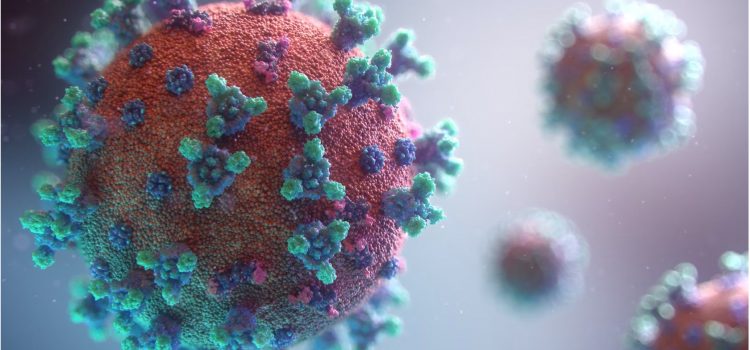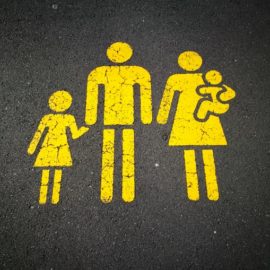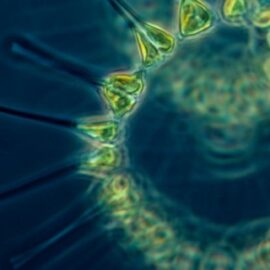
This is a free excerpt from one of Shortform’s Articles. We give you all the important information you need to know about current events and more.
Don't miss out on the whole story. Sign up for a free trial here .
Where did Covid-19 come from? What are the two major theories about the origins of Covid-19?
The U.S. Energy Department has concluded that the Covid-19 pandemic likely came from a lab leak, but other agencies support an animal origin hypothesis. The debate over Covid’s origins continues to puzzle scientists and the public alike since the virus first emerged.
Read on to learn about the two leading theories for how Covid-19 began.
The Origins of Covid-19: An Ongoing Debate
Where did Covid-19 come from? The Wall Street Journal reported on February 26 that the U.S. Energy Department has presumably answered this question, concluding that Covid-19 most likely originated from a Chinese laboratory. The article notes that while Energy Department officials have “low confidence” in their conclusion, which is based on new classified information, the FBI also agrees that a lab source is most likely.
This finding contradicts conclusions by The National Intelligence Council and the World Health Organization that Covid-19 comes from an animal source that was probably transmitted to humans. The following day, the Journal published another article emphasizing that there’s no consensus in the Biden administration about the origin of the virus.
In this article, we’ll look at both sides of the debate over where Covid-19 comes from, explaining how experts are drawing these conclusions.
What Evidence Do We Have?
There are two major theories about where Covid-19, which was first identified in the area of Wuhan, China, comes from:
- The natural origin hypothesis says the virus was likely transmitted to humans by an animal. Bats are known to carry coronaviruses, although they haven’t been known to spread the virus directly to humans. This theory suggests that the virus was transmitted from a bat, through a carrier animal—such as a pangolin—most likely in the Huanan seafood market in Wuhan. This is the suspected source location based on data showing that 66% of the earliest cases had a direct link to this market.
- The lab origin hypothesis says the virus was spread to humans via a lab “leak,” most likely from the Wuhan Institute of Virology. This institution has been conducting research on coronaviruses in bats for almost 20 years, since the global outbreak of the SARS virus. This theory suggests that the virus could have been transmitted to the larger population by an individual in that lab.
Here’s a look at the evidence for each of these hypotheses about where Covid-19 comes from originally.
The Animal Origin Hypothesis
One major reason scientists believe Covid-19 likely comes from nature is that animal-to-human contagion is the most common cause of all disease epidemics, from the historical Plague and Black Death, to the modern SARS and MERS. The latter are both caused by forms of coronavirus.
While bats are known to be common carriers of multiple forms of coronaviruses, scientists agree that direct bat-to-human transmission is highly unlikely—there are no known cases of this happening, even among employees on guano farms who come into direct contact with bat feces on a daily basis. So, they believe coronaviruses are most likely passed from bats to other animals, and from there to humans. Civets and camels have been identified as probable intermediate hosts for the SARS and MERS viruses, so the scientific community has focused its attention on a possible intermediate animal host for Covid-19 as well.
Some have suggested the most likely source to be the pangolin (an anteater-like animal) because it’s known to carry a form of coronavirus, and it’s regularly sold at Huanan Market in Wuhan. However, an article published by an international team of researchers in October 2020 concluded that the coronavirus form carried by the pangolin is not in the same family as SARS-CoV-2 (the strain that causes Covid-19), and thus the pangolin is not likely to be the culprit.
That paper also argues that the origin of the virus may not be the Wuhan market, as epidemiological data now suggest that the earliest cases were likely in October or November of 2019, and there’s no way to trace these to this specific location. Some epidemiologists conclude that the virus may have been spreading among humans at a low level before being identified in connection with the Wuhan market.
These experts suggest that although the virus was likely spread to humans from an animal, the exact animal source is largely irrelevant (and likely undiscoverable), because it’s human activities that caused the virus to jump from animal to human, to spread to pandemic proportions, and to continue to mutate into more treatment-resistant forms. Thus, placing “blame” on any specific animal may only cause unnecessary culling of that animal, potentially leading to ecological damage, and it will do nothing to stop the spread of Covid-19. To do that, and to prevent future pandemics, we must focus on social policies and the protection of animals and humans alike—for example by implementing restrictions on the harvesting and trade of wild animals and emphasizing health and safety practices in any such operations.
The Lab Origin Hypothesis
It remains unclear what new information led the Energy Department to come out in support of the lab-leak hypothesis. That report and the FBI’s investigation remain classified, so details are not available to the public. But let’s look at what we do know.
The controversial theory that Covid-19 may have come from a laboratory in China emerged early on in the pandemic and was promoted by then-President Donald Trump. Some have even suggested the virus could have been created as a biological weapon, although that possibility isn’t widely entertained by experts. The National Intelligence Council categorically refutes this theory and says analysis of SARS-CoV-2 shows that it’s unlikely to have been genetically engineered. The U.S. Intelligence Community also says their investigation into the activities of Wuhan Institute of Virology (WIV) officials around the time of the outbreak suggests that they had no foreknowledge of the virus.
So, those officials who hold with a lab origin hypothesis believe it would have been an accidental transmission. The National Intelligence Council points to some academic articles published by WIV researchers that indicate they may have had “inadequate biosafety conditions.” In early 2021, however, a team of scientists appointed by the WHO spent 12 days in Wuhan investigating the potential source of the pandemic. After a thorough investigation into the practices of the WIV, they concluded that a lab leak was “extremely unlikely.”
One of the head virologists at the Wuhan lab, Shi Zhengli, told reporters that the lab only deals with bat coronavirus samples, which makes transmission to humans unlikely, in the absence of an intermediary animal. She told reporters that they’ve never had the specific form of coronavirus (SARS-CoV-2) that causes Covid-19, and she also asserts that no researcher at her lab has ever tested positive for any form of coronavirus. She says after the onset of the pandemic, every member of her team was tested multiple times for Covid-19 antibodies, and all tested negative—indicating that they had never been infected at any point.
But the fact that the Chinese government controls the WIV raises suspicions about the accuracy of information coming out of it. Additionally, the Chinese government’s refusal to be fully transparent with researchers has hampered investigation, limiting the availability of data, and arousing suspicion that they’re covering something up.

Want to fast-track your learning? With Shortform, you’ll gain insights you won't find anywhere else .
Here's what you’ll get when you sign up for Shortform :
- Complicated ideas explained in simple and concise ways
- Smart analysis that connects what you’re reading to other key concepts
- Writing with zero fluff because we know how important your time is






